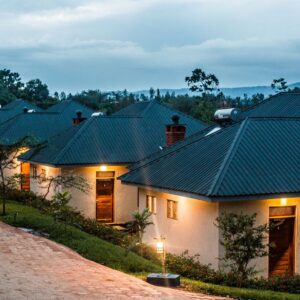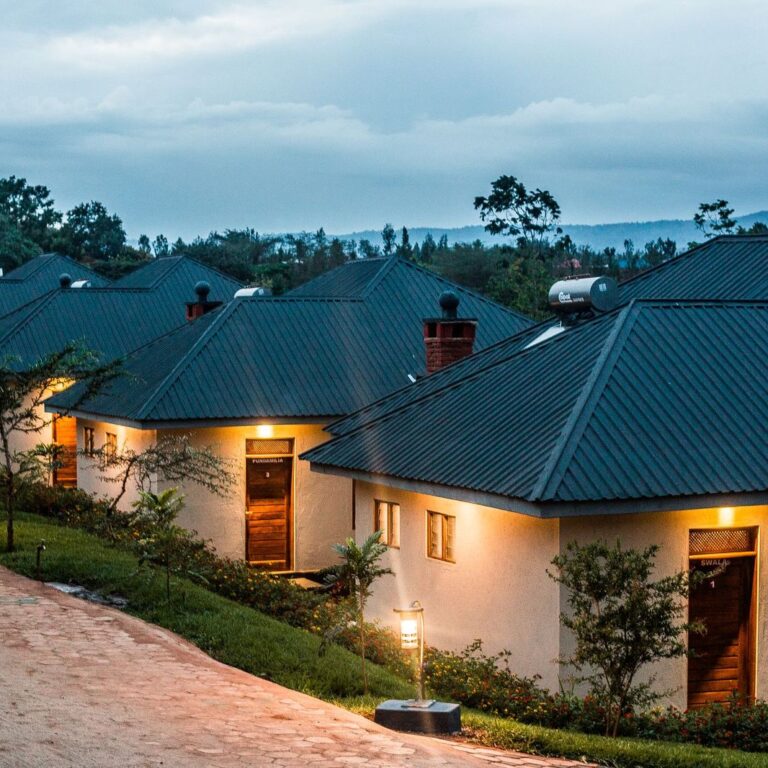5 Climate Zones of Mount Kilimanjaro.
Mount Kilimanjaro, Africa’s tallest mountain, boasts a fascinating range of five distinct climate zones that you’ll encounter as you ascend. Let’s explore each of these zones and their unique characteristics: Mount Kilimanjaro is home to 5 unique climate zones – all of which hikers pass through on their climb up to the summit, Uhuru Peak!
Unveiling the Five Climate Zones of Mount Kilimanjaro. Mount Kilimanjaro, standing majestically in Tanzania, is not just Africa’s tallest peak; it’s a geographic marvel that harbors distinct climatic zones. Each zone is characterized by unique ecological features, offering a fascinating journey for climbers and nature enthusiasts alike. Let’s delve into the intricacies of the Five Climate Zones of Mount Kilimanjaro.
1. The Bushland/Cultivated Zone of Mount Kilimanjaro – What You’ll See
At the foothills of Mount Kilimanjaro lies the Cultivation Zone, a fertile land blessed with abundant rainfall and lush vegetation. Here, the tropical climate nurtures thriving agricultural activities, sustaining local communities with crops like bananas, coffee, and maize.
The vibrant colors of blooming flowers and the rich aroma of fertile soil create a picturesque landscape, inviting travelers to immerse themselves in the region’s natural abundance. Cultivation Zone (Altitude Range: 2,600 to 6,000 ft / 792 to 1,800 m). Temperature Range: Days: 70-90°F (21-32°C), Nights: 40-60°F (4-15°C).
2. The Rainforest Zone of Kilimanjaro – What’s it Like?
Ascending further, adventurers enter the Rainforest Zone, where dense canopies of emerald green envelop the slopes of Kilimanjaro. Moisture-laden air from the Indian Ocean nourishes this ecosystem, fostering a diverse array of flora and fauna.
Towering trees, draped in moss and ferns, provide sanctuary to endemic species such as colobus monkeys and tropical birds. The symphony of chirping insects and cascading waterfalls echoes through the verdant expanse, captivating visitors with its ethereal beauty. Rain Forest Zone (Altitude Range: 6,000 to 9,200 ft / 1,800 to 2,800 m). Temperature Range: Days: 70-90°F (21-32°C), Nights: 40-60°F (4-15°C).
3. The Heath/Moorland Zone of Mount Kilimanjaro – What’s it Like?
As climbers ascend into higher altitudes, they transition into the Heather and Moorland Zone, a serene landscape characterized by rolling hills and expansive moors. Here, the climate becomes cooler and drier, giving rise to hardy vegetation such as heather and tussock grass.
Hikers traverse through golden meadows dotted with giant lobelias and senecios, witnessing the transition from lush forests to open savannas. The panoramic vistas of the surrounding plains offer a glimpse into the untamed wilderness of East Africa. Heath and Moorland Zone (Altitude Range: 9,200 to 11,000 ft / 2,800 to 3,350 m). Temperature Range: Days: 50-80°F (10-27°C), Nights: 30-60°F (-1 to 15°C).
4. The Alpine Desert Zone of Kilimanjaro – What to Expect
Venturing into the Alpine Desert Zone, trekkers confront the stark beauty of Kilimanjaro’s barren slopes. At this altitude, the air grows thin, and temperatures plummet, creating an otherworldly landscape reminiscent of lunar terrain. Sparse vegetation clings to rocky outcrops, adapted to withstand the harsh conditions of high altitude.
Despite its desolate appearance, the Alpine Desert exudes a raw allure, challenging adventurers to conquer its formidable peaks and embrace the spirit of exploration. Temperature Range: Days: 40-60°F (4-15°C), Nights: 20-40°F (-6 to 4°C). Highland Alpine Desert Zone (Altitude Range: 11,000 to 15,000 ft / 3,350 to 4,572 m)
5. The Arctic Zone of Kilimanjaro – How to Tackle Africa’s Ice Cap
At the summit of Mount Kilimanjaro lies the Arctic Zone, a realm where glaciers and eternal snowfields reign supreme. Here, the air is frigid, and winds howl relentlessly across the icy landscape. The glaciers, remnants of Kilimanjaro’s glacial past, shimmer in the sunlight, casting an ethereal glow over the summit crater. Standing at Uhuru Peak, the highest point in Africa, climbers are rewarded with a panoramic vista of the vast African plains below, a testament to their triumph over nature’s ultimate challenge. Arctic Summit Zone (Altitude Range: Above 15,000 ft / Above 4,572 m).
What are the Five Climate Zones of Mount Kilimanjaro?
Mount Kilimanjaro is made up of five major ecological climate zones. They are as follows: Cultivation Zone, Forest Zone, Heather-Moorland Zone, Alpine Desert Zone, and Arctic Summit climate zones. Below, we will look at each zone and what makes it unique. The Five Climate Zones of Mount Kilimanjaro are:
- Cultivation Zone (800 m to 1,800 m)
- Rainforest Zone (1,800 m to 2,800 m)
- Afro-alpine Moorland Zone (2,800 m to 4,000 m)
- Alpine Desert Zone (4,000 m to 5,000 m)
- Arctic Summit Zone (above 5,000 m)
What is the Cultivation Zone?
The Cultivation Zone, located at the foothills of Mount Kilimanjaro, is characterized by fertile soil and abundant rainfall. It sustains agricultural activities and supports crops like bananas, coffee, and maize.
Spanning the base of Kilimanjaro, the bushland/cultivated zone marks the beginning of the ascent. The zone extends from the mountain’s base up to approximately 6,000 feet (1,800 meters). The cultivated zone of Mount Kilimanjaro is a fertile belt where agriculture thrives.
What can I expect in the Rainforest Zone?
The Rainforest Zone is a lush, tropical environment filled with dense vegetation, towering trees, and diverse wildlife. Visitors can experience the beauty of cascading waterfalls, vibrant flora, and encounter species like colobus monkeys and tropical birds.
What defines the Heather and Moorland Zone?
As climbers ascend higher, they enter the Heather and Moorland Zone, marked by cooler temperatures and expansive moors. This zone is home to hardy vegetation like heather and tussock grass, offering panoramic views of the surrounding plains.
How is the Alpine Desert Zone characterized?
The Alpine Desert Zone is a harsh yet enchanting terrain where sparse vegetation clings to rocky slopes. With thin air and plummeting temperatures, this zone challenges adventurers with its desolate beauty and rugged landscapes.
What awaits at the summit in the Arctic Zone?
At the summit of Mount Kilimanjaro lies the Arctic Zone, where glaciers and eternal snowfields dominate the landscape. Climbers can marvel at the panoramic vista from Uhuru Peak, Africa’s highest point, and witness the glaciers shimmering in the sunlight.
What zone is the Kilimanjaro forest in?
Kilimanjaro highlands travel in East Africa is best idealized in the tropical forest zone, which starts from 1000 meters to 2800 meters. Some small mammals, such as hyrax and bush babies, venture amongst the crops looking for food, as do many birds, but most retire to the forest for shelter.
Which best describes the climate on Mount Kilimanjaro?
The humidity is generally high, especially in the rainforest zone, with average annual precipitation of around 80 inches. At higher elevations, snowfall is common throughout the year, and the air is significantly drier. Overall, the climate on and around Mount Kilimanjaro can be described as tropical and alpine.
Conclusion: Five Climate Zones of Mount Kilimanjaro
In conclusion, the Five Climate Zones of Mount Kilimanjaro offer a microcosm of the Earth’s diverse ecosystems, each zone a testament to the resilience of life in the face of adversity. From the fertile lowlands to the icy summit, Kilimanjaro’s allure lies not just in its towering height but in the kaleidoscope of experiences it offers to those bold enough to embark on the journey.







